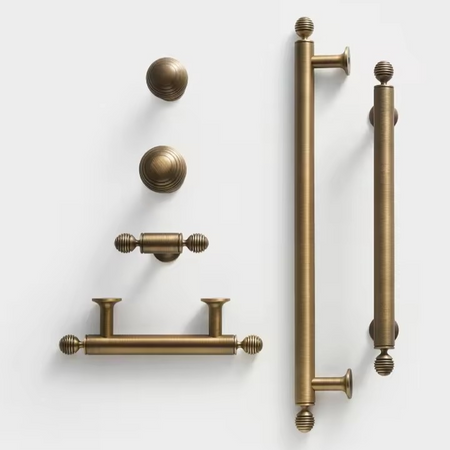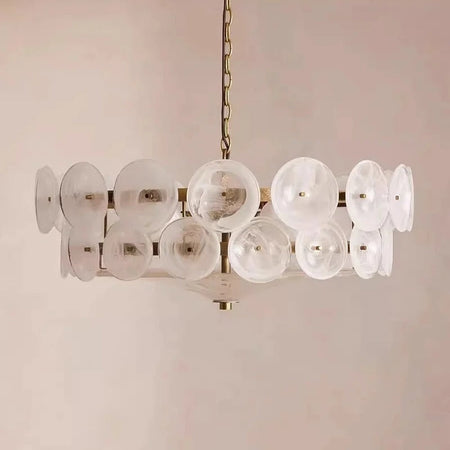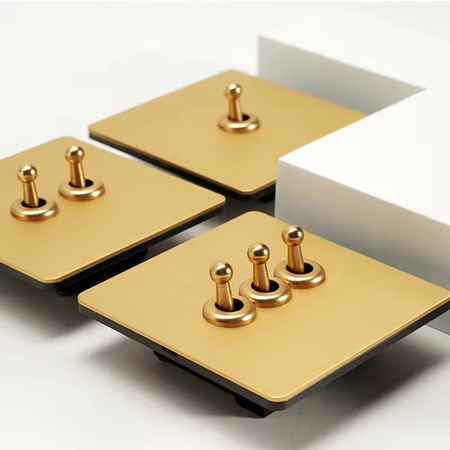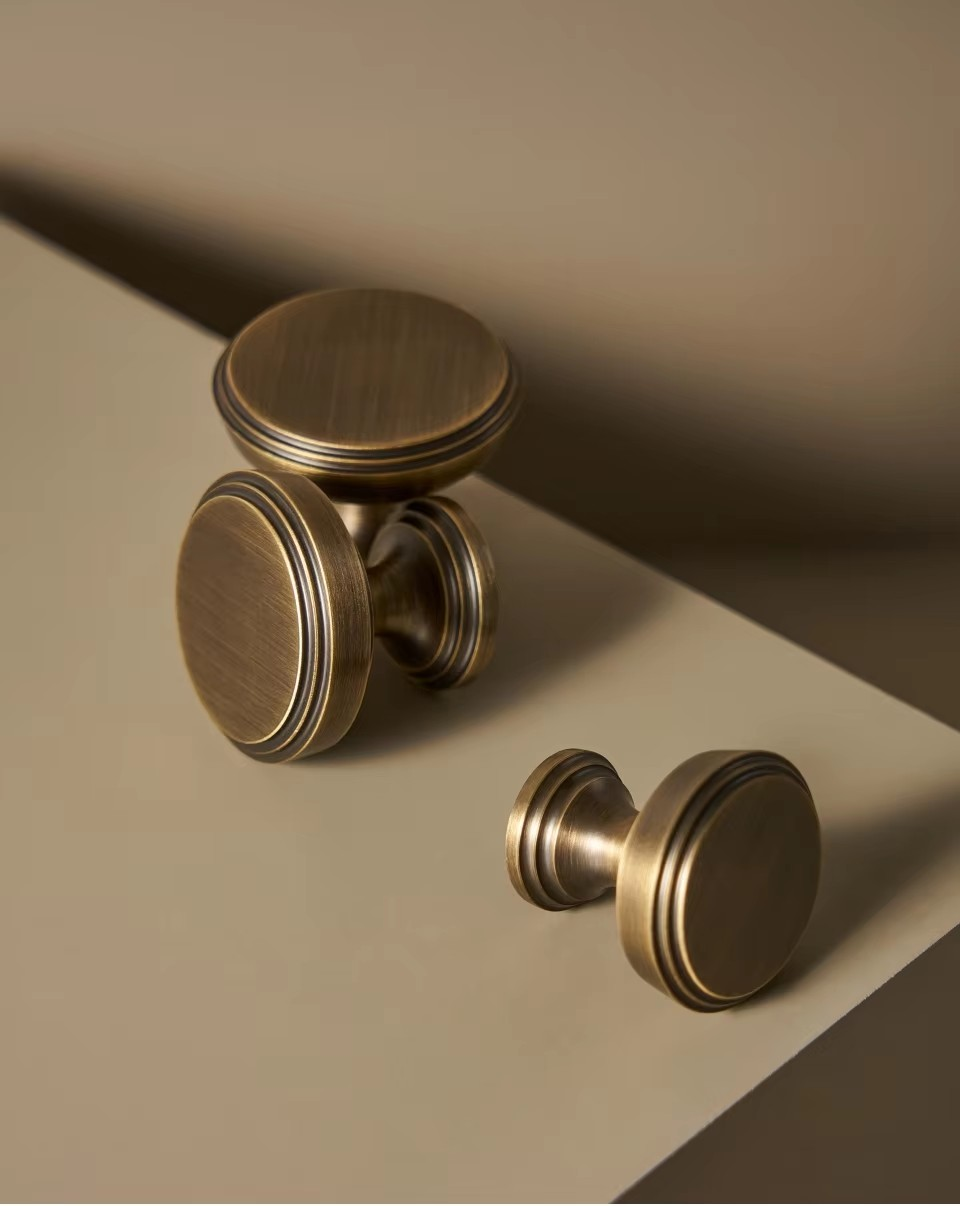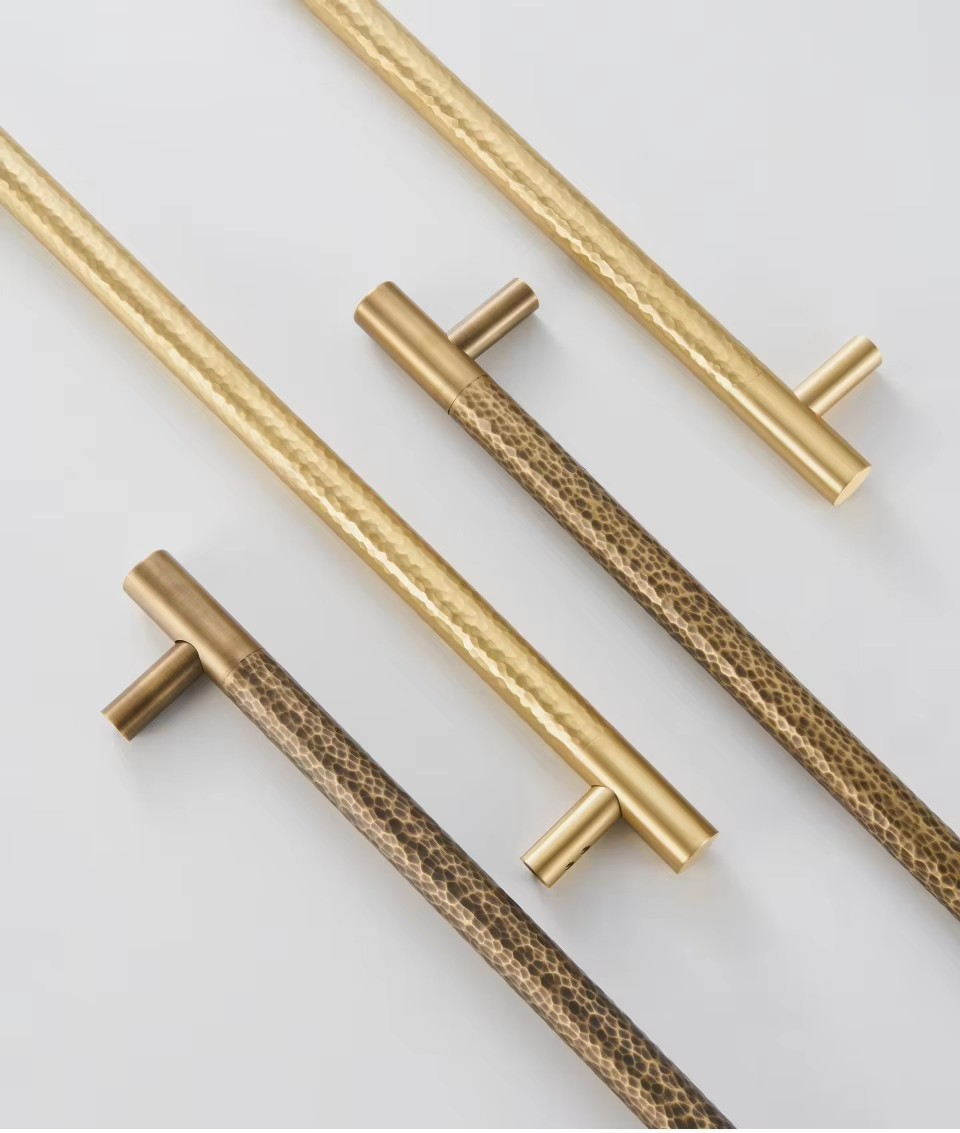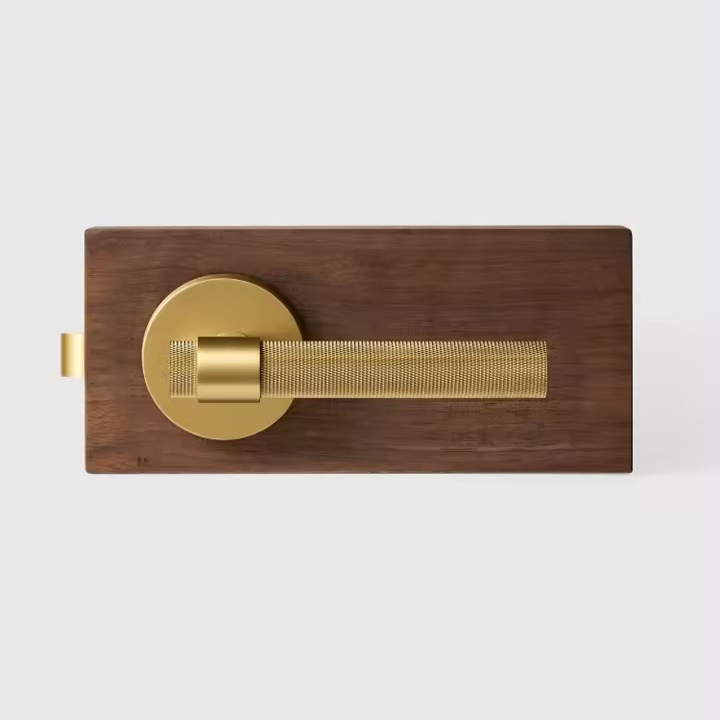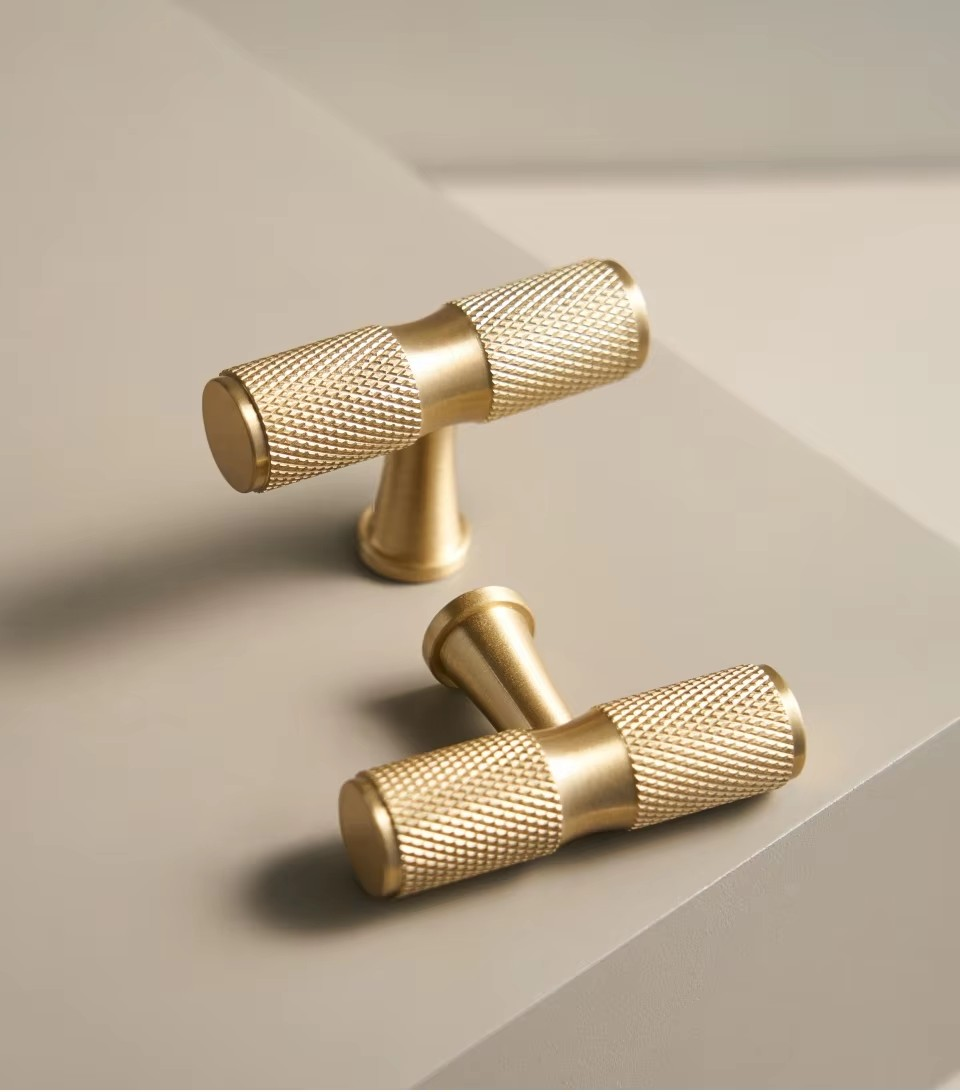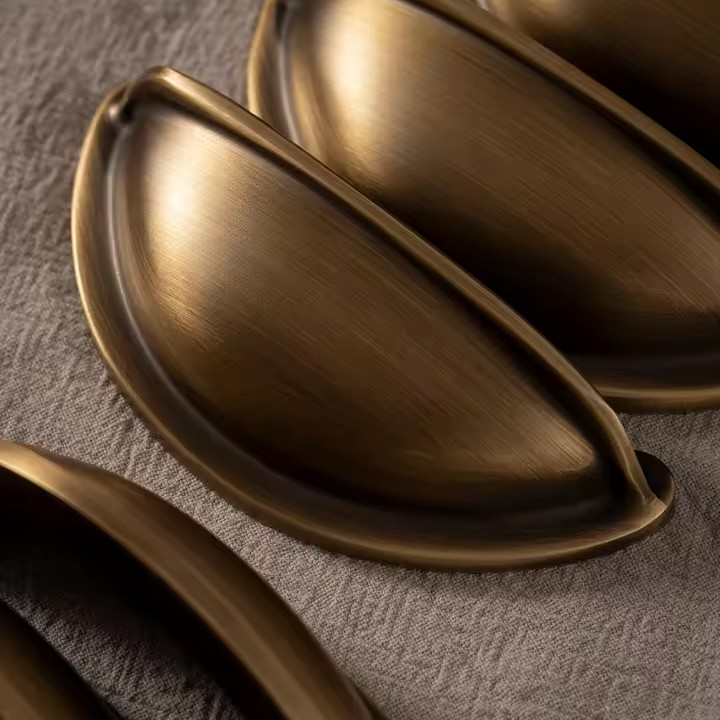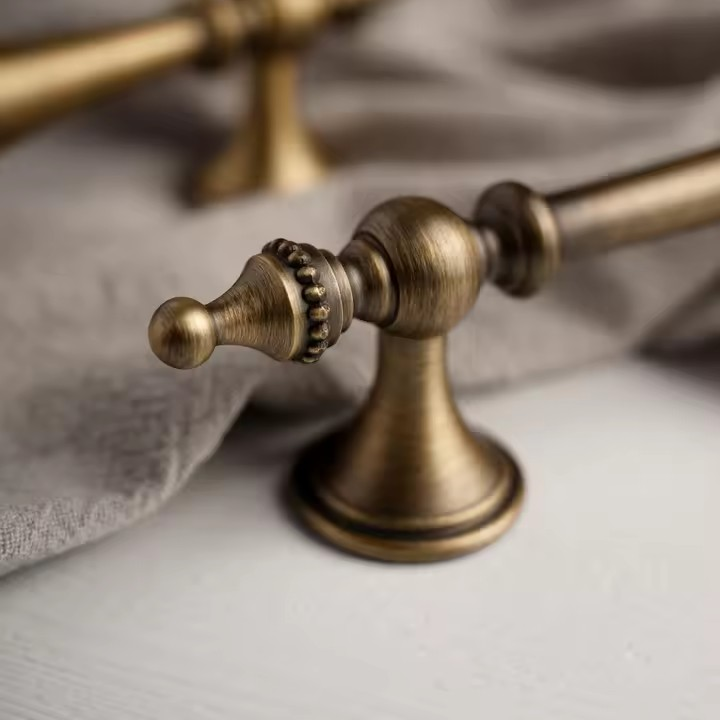
How To Install Cabinet Hardware
Atelier De LuxeShare
Installing cabinet hardware might seem easy, but it's key to a better kitchen. It makes your kitchen look and work better. By learning how to do it right, you add beauty and value to your home.
Choosing the right handles is important. It changes how your kitchen looks and feels. Plus, doing it well means your kitchen will look great to everyone who sees it. This guide will help with common questions about installing kitchen hardware.

Key Takeaways
- Installing cabinet hardware enhances both functionality and aesthetics.
- Choosing the right hardware impacts overall kitchen design.
- Proper installation can increase home value.
- Learning best practices helps achieve professional results.
- Understanding placement is key for usability and style.
Understanding Cabinet Hardware Options
Cabinet hardware is key in setting the look of a kitchen or bathroom. Homeowners can pick from many styles that match their taste. It's important to think about how these choices affect both the look and how easy it is to use the cabinets.
Types of Cabinet Hardware
There are many styles and materials to choose from when picking cabinet hardware. Here are some common ones:
- Knobs: These small fixtures can add a touch of elegance. They come in finishes like chrome and antique brass.
- Pulls: Longer and more ergonomic, pulls bring a modern feel. They're great for bigger cabinet doors.
- Handles: Similar to pulls but more for decoration, handles let you add detailed designs.
Each type can change the feel of a room, from modern to rustic. Finding the right mix of looks and function is key.
Choosing Between Knobs and Pulls
Choosing between knobs and pulls can be tough. Knobs are sleek and simple, while pulls are better for big cabinets. Here are some things to think about:
- Knobs need less space, making them good for small areas.
- Pulls spread out the force, making them easier to hold, even on heavy doors.
- The size and style should fit the cabinet's design.
While it's mostly a matter of personal taste, knowing the good and bad of each can help. Also, where you put the hardware is important. It affects how well you can use it.
Choosing the Right Location for Cabinet Hardware
Finding the perfect spot for cabinet hardware can make your space both functional and beautiful. Knowing the right spots for doors and drawers is key. Here are some tips to help you place hardware for both looks and ease of use.
Cabinet Hardware Placement on Doors
The standard height for cabinet hardware on doors is about 2.5 to 3 inches from the top. This height is easy to reach and looks clean. Here are some tips for the best placement:
- Consistency is key: Keep the same height for all doors to look uniform.
- Measure twice: Double-check the space before installing to fit different sizes.
- Consider the cabinet style: Knobs work well with traditional cabinets, while pulls suit modern ones.
Cabinet Hardware Placement on Drawers
For drawers, the standard placement is about 2 to 2.5 inches from the top. This makes it easy to open while keeping things balanced. Here are some extra tips:
- Placement aligns with functionality: Put hardware where it feels natural to pull the drawer open.
- Proportions matter: Choose hardware that matches the drawer size, avoiding too big or too small.
- Test before securing: Use tape to try out the hardware's height and alignment before fixing it.
The Ultimate Cabinet Hardware Placement Guide
Where you place cabinet hardware matters a lot. It affects how well things work and how they look. Knowing the right knob size and placement is key for a great kitchen or bathroom look. This guide will help you find the perfect spot for your hardware, focusing on shaker drawer fronts.
Knob Placement + Pull Size for Cabinets
Choosing the right knob placement is all about mixing function and style. Knobs should be 2.5 to 3 inches from the bottom of cabinet doors. For drawers, the middle spot is best for easy use. Pull sizes range from 3 to 12 inches, fitting different cabinet styles and user needs.
| Cabinet Type | Knob Placement (inches from bottom) | Recommended Pull Size (inches) |
|---|---|---|
| Upper Cabinet | 2.5 - 3 | 4 - 8 |
| Base Cabinet | 2.5 - 3 | 5 - 12 |
| Drawer Front | Centered | 3 - 12 |
Tips for Installing Pulls and Knobs on Shaker Drawer Fronts
Shaker drawer fronts need careful handling because of their simple design. Start by using a template to get things right. Double-check your knob placement to ensure it looks good. Using pre-drilled hardware makes installation easier and faster.

Tools You’ll Need for Installing Cabinet Handles
Starting your cabinet hardware installation project? You'll need the right tools for a professional finish. The right tools make the installation smooth and accurate. Here's a list of essential tools for a successful cabinet hardware installation.
Essential Tools for Cabinet Hardware Installation
- Drill: A cordless drill speeds up the process, making holes easier.
- Measuring Tape: Accurate measurements are key. Use a measuring tape to find the perfect handle spots.
- Screwdriver: You'll need both flathead and Phillips screwdrivers to secure the hardware properly.
- Level: A level ensures your handles are straight, improving your cabinets' look.
- Clamps: Clamps are useful for securing large doors while drilling.
- Template Jigs: These help align holes and keep hardware placement consistent across cabinets.
Recommended Products for Cabinet Hardware Installation
| Tool | Brand | Features | Price Range |
|---|---|---|---|
| Drill | DeWALT DCD771C2 | Compact, lightweight, with 2-speed transmission | $100 - $120 |
| Measuring Tape | Stanley FatMax | Durable construction, 25-foot extendable length | $15 - $20 |
| Screwdriver Set | Craftsman 9-31794 | Includes multiple sizes, ergonomic grip | $25 - $35 |
| Level | Empire True Blue | High visibility, durable construction | $20 - $30 |
| Clamps | Bessey K Body | Reinforced steel, even pressure distribution | $30 - $50 |
| Template Jig | Kreg KHI-HOLE | Easy setup, adjustable for different sizes |
$25 - $40 |

How to Install Cabinet Hardware Manually
Learning to install cabinet hardware yourself can be very rewarding. It's perfect for DIY fans who want to improve their kitchen or bathroom. This guide will show you how to do it yourself, giving you a professional look without the need for a contractor.
It's all about marking your drill points right and securing the hardware. The steps are easy and effective.
Step-by-Step Instructions for Manual Installation
Start by measuring and marking where your hardware will go. Make sure the spacing is even, if you're using more than one piece. Then, drill pilot holes where you marked to avoid splintering.
After drilling, place your hardware and screw it in. Do this carefully to ensure everything is perfectly installed and looks great.
Common Mistakes to Avoid When Installing Cabinet Hardware
When installing hardware yourself, watch out for common mistakes. One big one is misalignment. Always double-check your measurements to avoid this.
Also, don't use screws that are too long. They can crack your cabinet. And, don't rush the job. Taking your time will help you avoid mistakes and get a better finish.
FAQ
How do I install cabinet hardware manually?
Start by marking the spot for installation with a template. Then, tape the back of the cabinet door to prevent splintering before drilling holes. After that, add Loctite for secure fitting and screw the hardware into place.
What types of cabinet hardware are available?
You can find knobs, pulls, and handles in various materials, styles, and finishes. This lets you match them with your kitchen décor.
What is the best placement for cabinet hardware on doors?
Place knobs 2.5 to 3 inches from the top or bottom of the door. For pulls, center them vertically based on the door size.
How do I ensure accurate drilling for cabinet hardware?
Use a measuring tape to make precise markings for drilling holes. A cabinet hardware jig can also help with accuracy and consistency.
Can I use a template for installing cabinet hardware?
Yes! A template is great for installing cabinet hardware. It helps mark holes consistently across multiple cabinets, making the process quicker and more accurate.
What tools do I need for cabinet hardware installation?
You'll need a drill, measuring tape, level, screws, and a screwdriver. A cabinet hardware jig is also useful for precise installation.
What common mistakes should I avoid when installing cabinet hardware?
Avoid misaligning hardware, drilling holes too deep, and not double-checking measurements. Using proper techniques and tools can help avoid these mistakes.
How do I install handles and knobs on shaker drawer fronts?
Center handles and knobs carefully on shaker drawer fronts. Use a template to maintain consistency. Consider the drawer front's thickness when choosing hardware size.
What are the pros and cons of knobs versus pulls?
Knobs are easier to install and add a classic touch. Pulls offer a modern look and better grip. Your choice depends on design preferences and functionality needs.
How can I make my cabinet hardware installation process easier?
Use a cabinet hardware jig, follow a step-by-step guide, and have all tools ready. This can make the process smoother and less frustrating.

